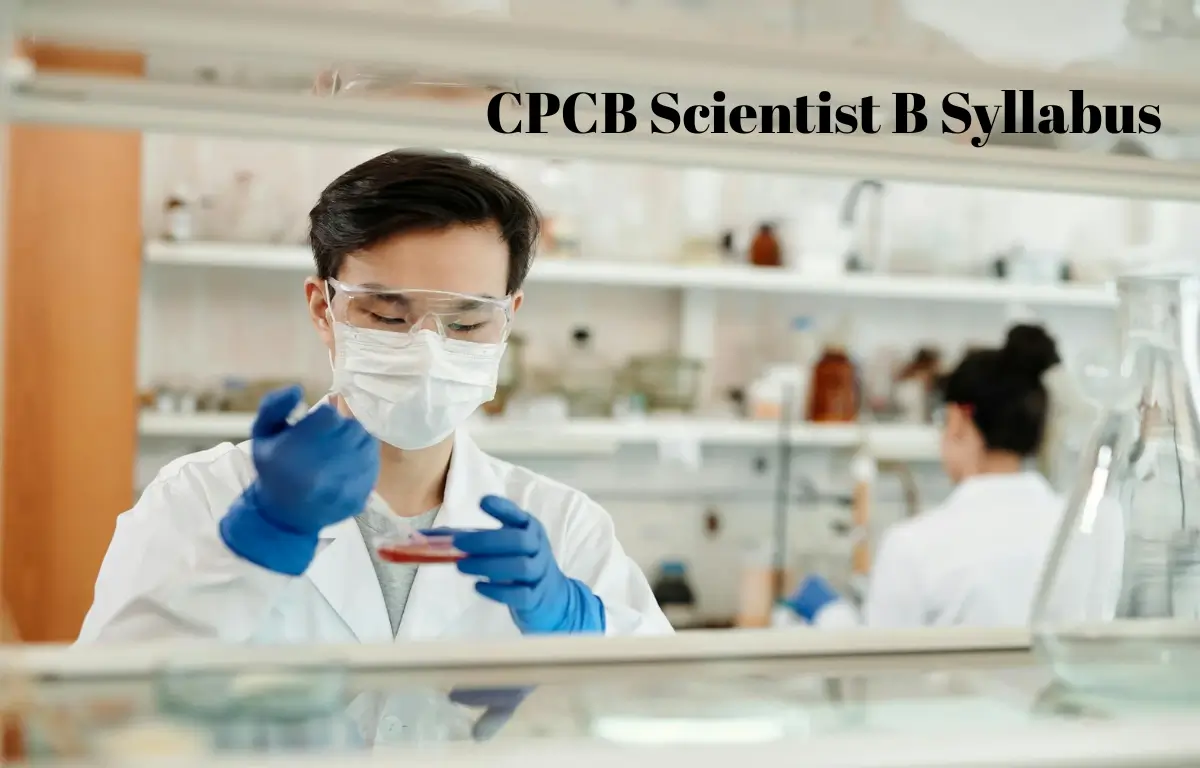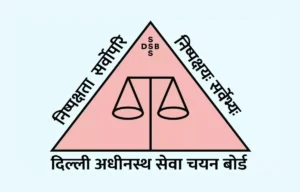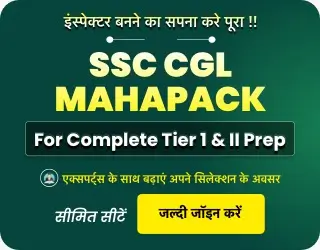| Branches |
Syllabus |
| Mechanical Engineering |
Section 1: Applied Mechanics and Design
Engineering Mechanics:
- Free-body diagrams, equilibrium, and friction (rolling, belt-pulley, brakes, clutches, etc.)
- Trusses, frames, virtual work
- Motion of rigid bodies, impulse and momentum, energy, Lagrange’s equation
Mechanics of Materials:
- Stress, strain, Poisson’s ratio, elastic constants
- Mohr’s Circle, bending moment, shear force
- Torsion, deflection of beams, column theory
- Material testing methods (hardness, impact, etc.)
Theory of Machines:
- Movement analysis (velocity, acceleration), cams, gears
- Flywheels, governors, balancing, gyroscopes
Vibrations:
- Free and forced vibrations, damping, resonance
- Critical speed of shafts
Machine Design:
- Design under different loads, failure theories
- Fatigue, S-N diagram
- Design of joints, bearings, brakes, springs, shafts
Section 2: Fluid Mechanics and Thermal Sciences
Fluid Mechanics:
- Fluid properties, statics, buoyancy
- Mass, momentum, energy equations
- Bernoulli’s equation, pipe flow, head loss
- Compressible and incompressible flows
Heat Transfer:
- Conduction, convection, and radiation
- Heat exchangers, fins, unsteady heat transfer
- Use of charts and formulas, radiation laws
Thermodynamics:
- Basic laws (zeroth to second), ideal and real gases
- Work, heat, entropy, availability
- Use of property charts and thermodynamic relations
Applications:
- Power plants, compressors, gas and vapor cycles
- IC. engines (Otto, Diesel cycles) Refrigeration, psychrometrics
- Turbines (Pelton, Kaplan, Francis), steam/gas turbines
Engineering Materials
- Structure and properties of materials
- Phase diagrams and heat treatment
- Stress-strain behavior of engineering materials
- Casting, Forming, and Joining Processes
- Types of casting and design of patterns, moulds, and cores
- Solidification, cooling, riser and gating system design
- Hot and cold working processes (forging, rolling, extrusion, drawing)
- Sheet metal operations (shearing, deep drawing, bending)
- Basics of powder metallurgy
- Principles of welding, brazing, soldering, and adhesive bonding
Machining and Machine Tool Operations
Basics of machining and machine tools
- Cutting tools (single and multi-point), tool materials and geometry
- Tool life, tool wear, and machining cost
- Non-traditional machining methods
- Jigs, fixtures, and work holding
- Abrasive machining processes
- NC/CNC machines and CNC programming
- Metrology and Inspection
- Limits, fits, and tolerances
- Linear and angular measurements, comparators
- Interferometry and surface finish measurement
Computer Integrated Manufacturing
- Basic concepts of CAD and CAM
- Integration tools and additive manufacturing
- Production Planning and Control
- Forecasting methods and production planning
- Scheduling and materials requirement planning (MRP)
Operations Research
- Linear programming and simplex method
- Transportation and assignment problems
- Network flow models
- Queuing models
- Project management using PERT and CPM
|
| Electronics and Instrumentation |
- Characteristics and applications of the diode, Zener diode, BJT, and MOSFET; small signal analysis of transistor circuits, feedback amplifiers. Characteristics of operational amplifiers; applications of amplifier: difference amplifier, adder, subtracter, integrator, differentiator, instrumentation amplifier.
- Combinational logic circuits, minimization of Boolean functions. Arithmetic circuits, comparators, Schmitt trigger, multi-vibrators, sequential circuits, flip flops, shift registers, timers, and counters; sample and-hold circuit, multiplexer, analog-to-digital (successive approximation, integrating, flash and sigma-delta) and digital-to-analogue converters (weighted R, R-2R ladder and current steering logic).
- SI units, systematic and random errors in measurement, expression of uncertainty – accuracy and precision index, propagation of errors. PMMC, MI, and dynamometer type instruments; dc potentiometer; bridges for measurement of R, L, and C, Q-meter. Measurement of voltage, current, and power in single and three-phase circuits; ac and DC probes; true RMS meters, voltage and current scaling, instrument transformers, timer/counter, time, phase, and frequency measurements, digital voltmeter, digital multimeter; oscilloscope, shielding, and grounding.
- Resistive-, capacitive-, inductive-, piezoelectric-, Hall effect sensors and associated signal conditioning circuits; transducers for industrial instrumentation: displacement (linear and angular), velocity, acceleration, force, torque, vibration, shock, pressure (including low pressure), flow (differential pressure, variable area, electromagnetic, ultrasonic, turbine, and open channel flow meters) temperature (thermocouple, bolometer, RTD (3/4 wire), thermistor, pyrometer, and semiconductor); liquid level, pH, conductivity and viscosity measurement
|
| Computer Science/ Information Technology |
- Computer: History of Computer and their classification, Basic Organization, Memory – RAM, ROM, EPROM, etc., Magnetic-Floppy, Hard disks, CDROM, WORM, etc., Concept of Virtual Memory and Cache Memory, Number systems, binary octal, Hexadecimal, Binary Addition, Subtraction and Multiplication, Flotation, point representation and arithmetic, Arithmetic through stacks.
- Operating systems: assemblers, elements of Assembly language programming-Overview of the Assembly process, assembler for the IBM PC, Process synchronization, Memory Management – address Binding – dynamic Loading and linking – overlays – logical and Physical address space –Contiguous Allocation – internal& External Fragmentation. Non-Contiguous Allocation: Packing and Segmentation Schemes – Implementation – Hardware Protection – Protection – sharing – Fragmentation.
- Virtual Memory: Demand Paging – Page Replacement – Page Replacement algorithms – Thrashing.
- File System: File Concepts – Assess Methods – Directory Structures – Protection Consistency Semantics – File system Structures – Allocation Methods – Free Space Management.
- I/O System: Overview – I/O hardware – Application I/O Interface – Kernel I/O subsystem, Performance, Secondary Storage Structures, Protection, Goals, Domain – Access matrix. ·
- Assemblers: Elements of assembly language programming – Overview of the Assembly process – Design of a low-pass Assembler – a single pass Assembler for the IBM PC. The security Problem – Authentication – Threats – Threat Monitoring – Encryption.
- Fundamentals of programming: Unix Programming, Programming In FORTRAN, C, Object Oriented Programming in C++, programming in Java, Basics of compilers.
- Database Management Systems: Advantages and components of a Database Management System, Data Types, Data Dictionary, Query Basics, Forms and Reports, Graphical objects, Error Handing, Distributing Application, Data Storage Methods, Data Clustering, and Partitioning, Database Administration, Backup and Recovery, Security and Privacy, Distributed Databases, Client/Server Databases, Object Oriented Databases, Integrated Applications, SQL, RDBMS.
- Internet Technology: Basics, topologies, layers, switching in the networks, bridges, routers and gateways, types of networks, Client/Server Applications, Internet Standards and specifications, ISP, Broad Band Technologies, Protocols, web servers, browsers, and security, firewalls, data security, HTML, DHTML, XML, Web designing.
- Fundamentals of Geographical Information System (GIS): GIS Data and Spatial Models, Topology ad Spatial Operations, Projections, Scale and Coordinate Systems, Mapping, GIS Analysis, and Cartography. Basics of GIS application development
|
| Chemical Engineering |
- Chemistry for Environmental Engineering
- Sewage Treatment Plants
- Air Pollution Control Technologies
- Waste Management (Solid Waste, Hazardous waste, E-Waste, Biomedical Waste, Plastic waste, and used Batteries waste)
- Industrial Wastewater Treatment (Design of ETPs/CETPs, etc.)
- Sewerage and Water Supply Engineering
- Noise Pollution & Control
- Basic Hydraulic Engineering (measurement of flow, etc.)
- Landfill Design
- Soil Contamination & Remediation
- Water & Air Quality sampling
- Industrial Pollution Control (Thermal Power Plants, Tanneries, Dairy, Steel, and Oil Refineries)
- Sensors & Transducers, Measurement techniques used in GC / GC-MS / NDIR / Spectrophotometer /HPLC / AAS / ICP /ERY/ED-ERF / Flame photometer / FTIR / Etc.
- Continuous Emission Monitoring Systems
- Units and Standards.
- Measurement of current, Voltage, power, Power-factor and energy.
- Indicating instruments.
- Measurement of resistance, and inductance. Capacitance and frequency
|
| Civil Engineering |
| Environmental Engineering |
| Chemistry |
- Analytical balance
- Chemistry
- Bio-monitoring, Bioremediation Environmental Laws
- International Environmental Treaties
- Water Quality Assessment Parameters Drinking Water Quality
- Assessment of Waste and Soll Contamination
- Atmospheric Chemistry Air Sampling
- Water Sampling
- Industrial Process Controls
|
| Microbiology |
- Diversity of Prokaryotic and Eukaryotic Microbes Microbial Physiology and Metabolism
- Virology
- Immunology
- Enzyme and Techniques in Biochemistry
- Environmental Microbiology
- Plant-Pathogen Interaction
- Microbial Pathogenicity
- Molecular Biology
- Recombinant DNA Technology
- Microbial Genetics
- Industrial and Food Microbiology
- Bioinformatics
- Bio-indicators
|



 OSSC CGL Syllabus 2025 and Exam Pattern,...
OSSC CGL Syllabus 2025 and Exam Pattern,...
 HP Patwari Syllabus and Exam Pattern 202...
HP Patwari Syllabus and Exam Pattern 202...
 DSSSB MTS Syllabus 2025 and Exam Pattern...
DSSSB MTS Syllabus 2025 and Exam Pattern...






